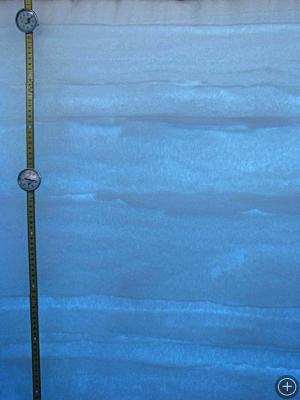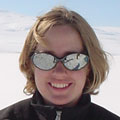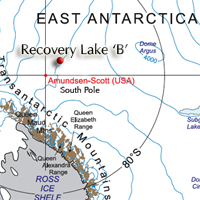It’s the Snow, Stupid!
January 19, 2008
Weather: All clear, -27 degrees C (-16.6 degrees F), Wind: 4 knots (4.6 mph)
RECOVERY LAKE ‘B’, ANTARCTICA– It’s the snow, stupid! …that determines many factors for this traverse, that is.
For instance, the changing snow surface impacts our fuel consumption quite a bit. In softer snow, the four vehicles use much more fuel than when we are going over areas of hard snow. The characteristics of the snow determine how easily we are able to cut blocks out to put in our melters to make water. Sometimes, like in the last two camps, the snow is not very well sintered, or stuck together, and falls apart like shoveling sugar. Other times, we find thick, wind-packed snow that we can readily saw into nice blocks.
For the last few weeks, if anyone has wondered, “Where’s Zoe?,” the answer has been in one of my snow pits. I’m just finishing up my sixth 2-meter deep pit today. Each pit is about 1 m wide, 2 m long and 2 m deep. With an average density of about .38 grams per cubic centimeter, I’ve dug about 1520 kg worth of snow for every pit (that’s over 3000 pounds for the Yanks) – over 9 tons altogether. Not that I’m keeping track, but it is no wonder I’m so tired.
What’s neat is that each pit has its own surprise, and each has been different. It’s been fun seeing what sort of snow and layers I find in each of the pits. The layers help us determine what conditions have been like in the last few 10 to 20 years. Large grains usually mean low accumulation rates, as large grains grow over time as smaller grain sublimate and condense onto larger grains. Old sastrugi and wind crusts, as well as hoar (very large faceted grains from warm conditions and water vapor moving in the snow pack) are also buried. These all help us figure out the puzzle of the past climate in this region, which is tricky since unlike in areas where you get lots and lots of snow and can see the seasonal layering in pits, the area we are in gets very little snow, and any seasonal layering tends to get smeared out over time.

Layering in the top 80 cm of one of my pits, seen in a backlit pit, which is basically two pits with a 20 cm wall in between. The light from one pit left open shines into the second pit, which is covered. In this image, wind crusts (thin lines in the snow), old sastrugi (darker layers), and hoar crystals (very light layers) can be seen.

 No comments
No comments 







